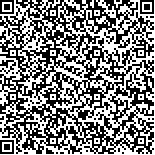下载中心
优秀审稿专家
优秀论文
相关链接
摘要

提出了基于支撑向量机(SVM)的遥感影像空间特征提取的新方法,并以SPOT全色波段影像上城市特征信息的提取为应用实例,并与人工神经网络(ANN)等特征提取方法进行综合比较,认为SVM方法不但能够获得比较高的分类精度,而且在学习速度、自适应能力、特征空间高维不限制、可表达性等方面具有优势。
Extracting and classifying spatial features from high_resolution satellite sensor imagery, especially from the image covering urban areas, is a very significant but challenging task. However, it is very difficulty to be implemented and the main obstacle comes from high_dimensional and complicated properties of spatial features. In this paper, the Support vector machine (SVM) is introduced as a new technique for solving a variety of learning and function estimation problems, and it has shown great potential in pattern recognition and computer vision problems. The optimal decision surface of a SVM is constructed from finite support vectors, which are conventionally determined by solving a quadratic programing (QP) problem and independent of the dimension of the features. Based on the idea of SVM, a new approach for spatial feature extraction and classification on high_resolution satellite sensor has been developed by the experimental case of spatial feature classification in central urban area of Hong Kong with SPOT Panchromatic image. The algorithms are synthetically compared with other established algorithms which are represented with conventional neural network algorithms including BPNN and ARTMAP. Finally, the conclusions can be drawn that SVM holds some particular advantages on its faster learning speed, self_adaptive and representative capability, no limitation by high_dimension property in feature space, etc.

